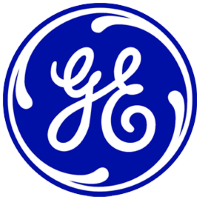
General Electric Co
NYSE:GE
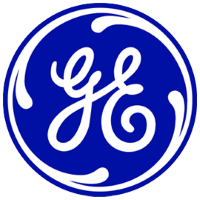
General Electric Co
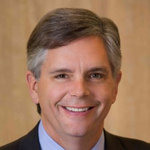
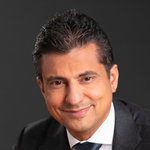
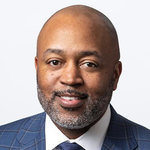


General Electric Co., commonly known as GE, is a titan that has been at the heart of American industrial prowess for over a century. Originating in the era of Thomas Edison, the company has grown and evolved into a multifaceted conglomerate that spans several sectors, including aviation, power, renewable energy, and healthcare. GE's operational backbone is its ability to integrate advanced technologies with industrial excellence, producing everything from aircraft engines and gas turbines to medical imaging equipment. This diverse portfolio is unified by GE's commitment to innovation and efficiency, making it a critical player in industries that demand precision and reliability. Each business unit works somewhat autonomously but benefits from the shared resources and strengths of being under the GE umbrella, fostering a culture of interconnectivity and mutual reinforcement.
GE generates revenue primarily by providing high-tech products and essential services that increase operational efficiency for its customers. For example, its aviation segment thrives by not only manufacturing jet engines but also offering maintenance and digital services, thereby ensuring sustained income streams long after the initial sale. In the energy sector, GE's focus is on producing and maintaining power plants using both traditional and renewable sources, such as wind. The company also invests significantly in digital innovation, using data analytics to harness industrial efficiency across all segments. Healthcare, another key area, allows GE to capitalize on cutting-edge diagnostic and imaging technologies that serve a rapidly growing and evolving market. By leveraging its engineering expertise and scale, GE positions itself to capture long-term contracts and build lasting relationships with global leaders in each domain it touches, crafting a business model that prioritizes both present returns and future growth.
Earnings Calls
In 2024, GE Aerospace achieved a significant 16% revenue growth, driven by a 46% surge in orders. Profit soared by 49%, leading to an EPS of $4.60, a 56% increase. Notably, free cash flow rose to $6.1 billion. Looking ahead, the company anticipates low double-digit revenue growth for 2025, with profits projected between $7.8 to $8.2 billion. Increased military spending will support this growth, alongside anticipated improvements in service demand. GE Aerospace also plans to boost share repurchases to $7 billion and raise dividends by 30%, reflecting its strong financial position.
Management

H. Lawrence Culp Jr. is a prominent American businessman known for his role as the Chairman and CEO of General Electric Company (GE). Born on March 1, 1963, Culp has a distinguished career in business leadership, marked by his strategic acumen and transformative influence on the companies he has led. Culp earned a bachelor's degree in economics from Washington College in Maryland and an MBA from Harvard Business School. His professional career began at Danaher Corporation, where he joined in 1990. Rising through the ranks, Culp became CEO in 2001 and served in that capacity until 2014. During his tenure at Danaher, Culp was credited with significantly increasing the company's market capitalization and revenue through strategic acquisitions and an emphasis on the Danaher Business System, which focused on continuous improvement and operational efficiency. In October 2018, Culp made history by becoming the first outsider to be appointed as Chairman and CEO of GE. His leadership at GE has been focused on restructuring and revitalizing the company, which has faced financial challenges in recent years. Culp's strategy has involved streamlining operations, reducing debt, and focusing on core industrial segments such as aviation, healthcare, and renewable energy. Under Culp's leadership, GE has worked towards stabilizing its balance sheet and improving its financial performance. His efforts have been broadly recognized as essential steps in restoring the iconic American company to a stronger financial and operational footing. Known for his hands-on leadership style, Culp emphasizes accountability, transparency, and operational excellence within GE's workforce.

Rahul Ghai is the Chief Financial Officer (CFO) of the Aerospace division at General Electric Company (GE). Before joining GE in September 2022, he served as Chief Financial Officer for Otis Worldwide Corporation, where he played a significant role in managing the company's financial operations, driving cost leadership, and supporting strategic growth initiatives. His leadership in finance is characterized by his focus on operational efficiency and earnings stability. Ghai has extensive experience in the financial sector, which includes leadership roles at Aetna and United Technologies Corporation, where he has honed his expertise in financial planning, analysis, and management. His comprehensive understanding of global financial operations and strategic outlook has been instrumental in shaping the financial frameworks of the companies he has served. In his role at GE Aerospace, Ghai is responsible for overseeing the financial strategy for one of the world’s leading aeronautical businesses, supporting innovations in aviation technology and manufacturing. His strategic approach in guiding financial policies aligns with GE's overarching goals of growth, innovation, and sustainability.

Russell T. Stokes is a seasoned executive with a long-standing career at General Electric (GE). He has held several key leadership roles within the company, particularly in the energy and industrial sectors. Stokes joined GE in 1997, and over the years, he ascended through the ranks by taking on various management and executive positions. One of his significant roles at GE was serving as the President and CEO of GE Power, a position he held during a crucial time as the company navigated the challenges and transformations within the energy sector. Prior to that, Stokes was the President and CEO of GE Energy Connections, where he was responsible for driving digital industrial transformation within the energy management space. Stokes is known for his strong focus on operational excellence and his ability to drive strategic initiatives. His leadership has been marked by efforts to innovate and promote a customer-centric approach within GE's operations. Additionally, Stokes has been a prominent advocate for diversity and inclusion within the corporate sector, actively supporting initiatives aimed at fostering inclusive work environments. Throughout his career, Russell T. Stokes has been recognized not only for his leadership within GE but also for his broader contributions to the industry, including his insights on energy transition and digital technologies. His tenure at GE showcases his adaptability and commitment to driving performance and growth in complex industrial landscapes.

Robert M. Giglietti is an executive associated with General Electric Co., where he has played a significant role in the company's operations. As of his last known position, he served in a high-level executive capacity, contributing to strategic developments and overseeing various aspects of the company's performance. With a background likely grounded in engineering or business, Giglietti's leadership has been influential in driving innovation and maintaining GE's standards of excellence. His work would typically involve liaising with different divisions of the company to align their objectives with the overarching goals of General Electric, ensuring that the company continues to thrive in the competitive industrial sector.

David L. Burns has had a notable career at General Electric Co. (GE). He served in various leadership roles within the company, particularly contributing to the growth and strategic evolution of GE's Additive Manufacturing sector. As an experienced personnel in the field, he held the position of Chief Strategy Officer for GE Additive, where he was responsible for developing strategies to enhance GE's position in the additive manufacturing industry, fostering technological innovations, and integrating these technologies into GE's wider industrial processes. Before joining GE, David Burns had significant experience in advanced manufacturing and technology sectors, positioning him as an expert in driving the transition from traditional manufacturing to innovative methods like 3D printing. His efforts have been central to GE's pursuit of leadership in industrial technology advancements. As an advocate for the transformative potential of additive technologies throughout his career, Burns has been instrumental in promoting the adaption and acceptance of new manufacturing paradigms within the company and the broader industry.
John R. Phillips served as an executive at General Electric Company, a leading global industrial conglomerate. During his tenure at GE, he was involved in various capacities, contributing to the company's growth and development. Phillips was known for his strategic acumen and leadership skills, which helped GE navigate the complexities of global markets. Phillips worked on several initiatives that aimed to enhance GE’s technological innovations and operational efficiency. His role often involved collaboration across different departments, emphasizing GE's commitment to innovation and quality. Through his efforts, Phillips played a significant part in maintaining GE's competitive edge in various industrial sectors. His precise accomplishments and roles within the company highlight GE's dedication to leadership development and fostering a robust talent pipeline. Phillips’ career at GE exemplifies the company's focus on building a resilient and adaptable executive team, capable of steering the business through changing economic and industrial landscapes. If further specific details regarding his position or contributions to the company are required, please provide additional context or resources.

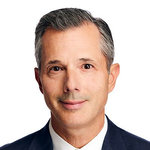
Christian E. Meisner is a senior executive known for his role at General Electric Co. (GE). He serves as the Senior Vice President and Chief Human Resources Officer at GE. In this position, he is responsible for overseeing the company's global human resources strategy and initiatives, including talent development, organizational transformation, and culture enhancement. Before joining GE, Meisner had extensive experience in human resources management across various industries. His leadership has been crucial in shaping GE’s approach to talent management, diversity, and inclusion. Under his guidance, GE has implemented numerous programs aimed at enhancing employee engagement and building a resilient workforce fit for the challenges of the modern business environment. Meisner is recognized for his strategic vision and capability to align HR practices with the company's overall business objectives, thus driving growth and innovation. His efforts in fostering a dynamic and inclusive workplace culture play a significant role in sustaining GE's position as a global leader in technology and industrial sectors.

Christoph A. Pereira is a notable executive at General Electric Co. (GE), serving in a leadership capacity. His career at GE spans significant roles, reflecting his expertise in legal, regulatory, and compliance matters. Pereira has served as the Chief Risk Officer and served in senior leadership roles where he has overseen corporate governance, policy, risk management, and regulatory compliance. His previous experience includes serving as Senior Vice President and Chief Enterprise Risk Officer, a role in which he guided the organization through strategic risk considerations. Before joining GE, he played key roles in various major corporations, contributing his expertise to enhance corporate governance and compliance frameworks. Pereira is known for his strategic insight and comprehensive knowledge of global regulatory environments. Throughout his career, his contributions to operational risk management and governance have been recognized as playing a pivotal role in shaping the companies he has been part of. In his roles at GE, Pereira has been instrumental in fostering a culture of transparency and accountability, aligning risk management with business strategy, and ensuring that the company's practices adhere to both internal and external standards. His leadership style is marked by a focus on collaboration, innovation, and continuous improvement.
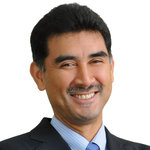
Ramesh Singaram has held significant leadership roles at General Electric Co. (GE), particularly within the Asia Pacific region. He has been instrumental in advancing GE’s efforts in this area, focusing on sectors such as energy, aviation, and healthcare. Ramesh Singaram is known for driving operational excellence and fostering innovation in GE's business strategies. His leadership has been marked by an emphasis on strengthening customer relationships and expanding GE’s market presence in the region. Under his guidance, GE has worked towards integrating cutting-edge technology and sustainable practices into its operations, aligning with global trends towards digital transformation and environmental responsibility. Ramesh Singaram's career reflects a commitment to growth and innovation, positioning GE as a key player in the global industrial sector.













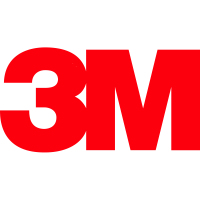




































 You don't have any saved screeners yet
You don't have any saved screeners yet

Good day, ladies and gentlemen, and welcome to the GE Aerospace Fourth Quarter 2024 Earnings Conference Call. [Operator Instructions] My name is Liz, and I will be your conference coordinator today. If you experience issues with the webcast slides refreshing or there appears to be delays in the slide advancement, please hit F5 on your keyboard to refresh. As a reminder, this conference is being recorded. I would now like to turn the program over to your host for today's conference, Blaire Shoor, Head of Investor Relations. Please proceed.
Thanks, Liz. Welcome to GE Aerospace's Fourth Quarter and Full Year 2024 Earnings Call. I'm joined by Chairman and CEO, Larry Culp; and CFO, Rahul Ghai. Many of the statements we're making are forward-looking and based on our best view of the world and our businesses as we see them today. As described in our SEC filings and website those elements may change as the world changes. Additionally, Larry and Rahul, consistent with prior quarters, will speak to total company and corporate financial results and guidance today on a non-GAAP basis. Now over to Larry.
Blaire, thank you, and good morning, everyone. Head of Investor Relations, that has a nice ring to it, Blaire. I hope everybody saw our announcement last week relative to Blaire's promotion. She's excited. We're excited. 2024 was the year for the history books at GE Aerospace. In April, we became a stand-alone public company, the culmination of GE's multiyear transformation. Nothing has been more front and center than our purpose, inventing the future of flight, lifting people up and bringing them home safely. Those last 4 words remain our top priority with nearly 1 million passengers in flight at this very moment with our technology under wing.
We launched FLIGHT DECK, our proprietary lean operating model to better serve our customers through our relentless focus on safety, quality, delivery and cost in that order. Seeing our teams in action through the year with FLIGHT DECK from Malaysia to Wales to Asheville and elsewhere, truly was energizing. Commercial momentum continues. We signed several key services agreements and received orders for more than 4,600 commercial and defense engines.
In narrowbodies, this included American Airlines commitment for 85 new Boeing 737 MAX jets powered by our LEAP-1B. In widebodies, we were honored to add a new GEnx customer, British Airways. And in defense, we received an order from the Polish Armed Forces for 210 T700 engines to power the 96 Boeing AH-64E Apache Guardian helicopters.
At the close of the year, we received certification of the LEAP-1A HPT durability kit. Combined with the 3 prior durability enhancements that are performing well in the field, it's designed to increase LEAP time on wing by more than twofold current levels and achieve parity, with the CFM56's performance today. Just this week, in fact, we shipped our first retrofit engines to customers with the new hardware.
It's also easier to produce supporting our output trajectory going forward. At the same time, we've advanced significant technology milestones that will propel GE Aerospace into the future. Our RISE program with CFM completed more than 250 tests on our way to developing a full-scale open fan engine. We recently announced that in collaboration with Boeing, NASA and the Oak Ridge National Laboratory, we will model the integration of an open fan engine design on an aircraft wing. And our defense team successfully demonstrated a hybrid electric propulsion system rated at 1 megawatt with the U.S. Army. This represents a meaningful increase in power generation, enabling us to advance hybrid electric propulsion applications.
But perhaps more important than what we accomplished in 2024 is how we did it. And my thanks this morning go out to our entire team for their unwavering commitment to delivering for our customers. GE Aerospace delivered a standout year financially with revenue up double digits, profit up $1.7 billion and free cash flow up $1.3 billion, and we've been a strong surpassing our most recent guide.
In the fourth quarter, robust demand continued. Orders were up 46% and revenue grew 16% with double-digit growth in services and equipment for both orders and revenue. Profit was up nearly 50% and EPS more than doubled. Free cash flow was up over 20% with conversion above 100%.
At Commercial Engines & Services, our fourth quarter orders were up 50%, revenue was up 19%, and profit increased 44%, while deliveries progressed. And for the full year, demand remained robust, with Services orders up 30%, total revenue up double digits and profit, up 25% to $7.1 billion. In Defense and Propulsion Technologies, fourth quarter orders were up 22% and defense units nearly doubled sequentially. For the full year, revenue was up 6% and profit increased 17% to $1.1 billion.
Looking ahead to 2025, we're maintaining this momentum as we aim to deliver another year of substantial revenue, EPS and cash growth. We expect departures growth of mid-single digits and increased military spending. This supports solid low double-digit revenue growth, including growth in CES and DPT. We expect profit in the range of $7.8 billion to $8.2 billion. This, combined with a lower share count, will translate to EPS in the range of $5.10 to $5.45, up 15% at the midpoint.
For free cash flow, we expect to generate $6.3 billion to $6.8 billion with conversion remaining robust, above 100%. And given the strength of our balance sheet, we're increasing our share repurchases to $7 billion and planned to raise our dividend by 30%, subject, of course, to board approval. Overall, GE Aerospace is, I believe, an exceptional franchise with a tremendous financial profile.
Stepping back, between 2023 and 2025, taking the midpoint of our guide, we expect to grow profit $2.5 billion and free cash flow nearly $2 billion over this 2-year period. Today, we're focused on keeping our customers' fleet flying and delivering on our new engine backlog. Our team is using FLIGHT DECK to tackle supply chain constraints head on. From the first half to the second half of 2024, we delivered meaningful improvement as material inputs increased 26% across our priority supplier sites. This in turn supported CES Services' revenue growth of 17% and engine unit growth of 18% with Defense & Commercial both up double digits, including LEAP, up 12%.
We're encouraged by our progress more recently in the fourth quarter, where CES Services revenue increased 12% year-over-year, supported by expanded shop visit work scope and spare parts growth. But this was lighter than we expected due to internal -- lower internal shop visit volume given material constraints. Total engine units improved up 3% with defense up 20%, but commercial was roughly flat, with LEAP, down 5%.
We'll need to drive further sustainable improvements to meet '25's demand, and this is exactly where FLIGHT DECK is so important. Earlier last year, our priority suppliers shipped only half of their committed targets to us. Today, they're shipping over 90% of the committed volume. In a recent joint Kaizen with a priority supplier, we focused on eliminating waste, achieving a 50% increase in output, 50%. And throughout 2024, we deployed over 550 of our supply chain and engineering resources into that same supply base, demonstrating that we're at our best when we're operating as one team. Building off this momentum, we're bringing together our engineering and supply chain teams into one new organization. Technology and operations, which will be led by Mohamed Ali. With shared accountability across the full value chain, this cross-functional team will enable faster problem solving to help improve deliveries.
These actions, combined with our close alignment on demand schedules will enable higher material inputs in 2025 and importantly, beyond.
Finally, with expanded LEAP aftermarket capacity by approximately 40% in 2024, this will support the growing fleet of 3,300 LEAP-powered aircraft with now 10,000 engines in backlog. Here's how.
First, we're eliminating waste and reducing turnaround time using FLIGHT DECK. For example, our on-wing support team redesigned the LEAP engine flow, increasing output by 50% for the year. This contributed to leave internal shop visit growth of more than 20% in the fourth quarter alone. Second, we're investing more than $1 billion in our internal MRO facilities over the next 5 years. We're growing our repair technologies, which will help lower the cost of ownership and provide faster turnaround times. Our recently opened services technology acceleration center here in Ohio, will be a key enabler in deploying repairs across our global MRO network. And third, we're strengthening our lead third-party network.
Last year, 5 premier MROs completed around 10% of total LEAP shop visits. This is critical experience for them as their volume increases further in 2025. Overall, we're entering 2025 with a stronger foundation to service and deliver our engines faster with the highest possible levels of safety and quality.
Turning to Slide 7. Demand for our services and products remains robust, highlighted by orders, up 46% in the fourth quarter. At CES and narrow-bodies, EL AL Israel Airlines confirmed its commitment for 20 737 MAXs with LEAP-1B engines under wing. We've also extended service contracts, including a 10-year engine maintenance agreement with Fly Dubai, for their CFM56 powered aircraft. And notably, the Airbus 321 XLR powered by our LEAP-1A engines completed its inaugural commercial long-haul flight. Our engines are providing airlines with greater route flexibility and overall operational efficiency.
In widebodies, Royal Jordanian announced an order for 18 GEnx-1Bs plus spares to power their expanded Boeing 787-9 fleet. And China Airlines also announced an agreement for 10 Boeing 777-9s with the GE9X under wing. In DPT, we're building on our leading defense programs. We received orders under our contract with the U.S. Army valued up to $1.1 billion for the continued production of T700 engines through 2029.
The new T700s will power the Sikorsky H-60, the Bell H1 and the Boeing AH-64 platforms. In addition, to expanding our extensive installed base, we're enhancing our customer solutions. We signed an agreement to acquire North Star Aerospace, a leading manufacturer of mission-critical gears and shafts, NorthStar will be highly complementary to our Avio Aero business, providing a U.S.-based presence in this market and adding new programs and capabilities to deliver complex like critical parts. Stepping back, I couldn't be prouder about what we're building as GE Aerospace as we advance flight for today, tomorrow and the future. Rahul, over to you?
Thank you, Larry, and good morning, everyone. We closed out 2024 with another strong quarter. Orders were up 46%, with significant demand for both services and equipment. Revenue was up 16%, with growth in CES and DPT.
Profit was $2 billion, up 49%, driven by services volume, favorable mix and price. Margins were up 450 basis points to 20.1%. EPS of $1.32 more than doubled from profit growth and a reduced tax rate. Free cash flow was $1.5 billion, up 21% from higher earnings. Working capital was a source primarily from long-term service contract billings. While accounts receivables increased, days sales outstanding were down 5 days year-over-year.
Given the ongoing material availability challenges, inventory increased, although at a lower rate than prior quarters. For the year, orders were up 32%, including Services orders up 30%. Revenue was up 10%, with growth in both segments. Profit increased 30% with $7.3 billion with margins expanding 330 basis points to 20.7%, driven by commercial services. EPS increased 56% to $4.60 from significant profit growth, a lower tax rate and the absence of preferred dividend. Free cash flow was up almost 30% to $6.1 billion with conversion over 120%. Taken together, we delivered significant growth across all key metrics, both in the quarter and the year.
Looking closer at our businesses, starting with CES, in the quarter, orders were up 50% as Services demand remained robust, while equipment accelerated. Our recent wins build on our backlog of $154 billion with about 90% of that backlog in Services. Revenue was up 19%, with services up 12%, driven by shop visit revenue, higher spare parts and price. Internal shop visit revenue, representing around 60% of services revenue grew double digits, increased work scopes, higher pricing and engine mix more than offset shop visit volume that was down 3% due to material constraints.
Spare parts revenue, representing roughly the other 40% was up from higher volume and price. Equipment grew 38%. While we made progress, supply chain constraints impacted total deliveries, down 2%, including LEAP, down 5%. For the year, LEAP deliveries were down 10%, in line with our latest expectations. Lower volume was more than offset by customer mix and price. In addition, given our growing fleet with high utilization, we caught up on spare engine deliveries to support airline fleet stability. Although the spare engine ratio was elevated in the fourth quarter, overall LEAP life-of-program ratio through 2024 remains in low double digits.
Profit was $2.2 billion, up 44% as spare parts volume, increased shop visit work scope, mix and price more than offset inflation and investments. Margins expanded 490 basis points to 28.2%. Overall, CES delivered strong full year results with orders up 38%, revenue up 13% and profit growing 25% to $7.1 billion. Margins expanded 250 basis points to 26.2%.
Moving to DPT. Orders were up 22%, primarily driven by Defense & Systems. Demand remains strong here as well, with Defense book-to-bill of 1.2x for the quarter and the full year. Our backlog for the segment is now at $18 billion, up more than $1.5 billion year-over-year. Revenue grew 4%. Defense & Systems revenue was up 6%, driven by higher engine deliveries and price, partially offset by lower services. Defense units were up 20% year-over-year with more than 90% quarter-over-quarter. Propulsion & Additive Technologies, or PAT grew 2%, as lower commercial volume Avio was more than offset by growth in other PAT businesses. Profit was up 2%, driven by improved pricing and productivity, partially offset by investments in next-gen engines and inflation. Margins were down 20 basis points. Overall, a strong finish as full year orders were up 10%, revenue grew 6% and profit was up 17% to $1.1 billion with margin expansion of 110 basis points.
A movement in corporate. We made substantial progress to ensure our operations reflect the needs of GE Aerospace as a stand-alone company. Corporate costs, including eliminations, was about $860 million for the year. Elimination increased by $100 million to approximately $470 million from higher internal volume in PAT. Excluding eliminations, cost was down over 1/3 to roughly $400 million, driven by lower functional expenses and higher interest income. We also fully exited our remaining stake in GE Healthcare this quarter. And for the year, we returned more than 100% of free cash flow to our shareholders, including $5 billion of share buyback and a dividend of around 30% of net income. Based on the strength of our performance and balance sheet, GE Aerospace is well positioned to compound shareholder returns for long term.
Switching to our 2025 guide. Starting with CES. We expect mid-teens revenue growth for the segment. We are now expecting services to be up low double digits to mid-teens, up from our prior view of low double digits.
At the midpoint, we expect internal shop visit revenue to be up from higher work scope, improved pricing and high single-digit shop visit volume growth, which is pushed to the right from 2024. We continue to expect low double-digit spare parts revenue growth from mid-single-digit air traffic growth and pricing. We expect equipment up high teens from growth in engine volume including LEAP deliveries up 15% to 20% and pricing, more than offsetting negative engine mix. We expect $7.6 billion to $7.9 billion of profit at CES, reflecting the benefit of services growth. This will be partially offset by the impact from increased R&D investments and higher 9X deliveries in the second half of the year.
We also expect a lower spare engine ratio. In DPT, we expect mid- to high single-digit revenue growth. We've increased defense units and profit in the range of $1.1 billion to $1.3 billion. Higher defense deliveries are partially offset by self-funded investments in the first half. Corporate costs are expected to be less than $1 billion. Eliminations are expected to grow as internal PAT volume grows. In total, we expect another year of low double-digit revenue growth for the company with profit in the range of $7.8 billion to $8.2 billion, up about $750 million or 10% at the midpoint over 2024.
Turning to Slide 12. We expect EPS to be in the range of $5.10 to $5.45, up roughly 15% at the midpoint. About 80% of the improvement will be from higher profit. The balance will come through a reduction in the tax rate, which is expected to improve to below 20%, and the benefit from share repurchases, including the $5 billion executed in 2024 and an additional $7 billion expected in 2025. We expect to generate $6.3 billion to $6.8 billion of free cash flow, with year-over-year growth primarily from higher earnings. Contributions from working capital and AD&A combined year-over-year will be more than offset by higher CapEx and cash tax payments. Overall, we expect another year of conversion that is solidly above 100%. Taken together, GE Aerospace is poised for another year of growth ahead.
With that, Larry, I'll turn it back to you.
Perfect. Thank you. 2024 clearly was a strong first year for us as GE Aerospace. We grew revenue, earnings and cash significantly along with returning over $6 billion to shareholders. That performance was underpinned by our competitive advantages. Our platforms are preferred by customers across the narrow-body, wide-body and defense sectors. Our industry-leading services and technologies provide the highest levels of operational reliability, including greater efficiency, time on wing and faster turnaround times. At the core of everything we do is safety, quality, delivery, in that order. And we're focused on unrivaled customer service and flight support across the industry's most extensive installed base with 70,000 engines.
Our breakthrough innovations in both commercial and defense paved the way for a more sustainable flight and FLIGHT DECK, which connects our strategy to our results, enables us to deliver and create exceptional value for our customers and our shareholders. We believe our path forward is clear. We're well positioned to deliver another year of substantial growth and deploy over 100% of our free cash flow to shareholders. Before we wrap our prepared remarks, I'd like to take a moment to express our support for all of those impacted by the fires in Southern California.
Seeing our CF6, CFM56 and T700 engines powering many of the planes battling fires, we feel a deep connection to our commitment to safety and hope that those fires can be contained soon. Blaire, shall we go to Q&A?
[Operator Instructions] Liz, can you please open the line?
[Operator Instructions]
Our first question comes from Scott Deuschle with Deutsche Bank.
Rahul, can you refresh us on what the 2025 guide is assuming with respect to LEAP OE profitability? And then when LEAP OE achieves breakeven, do you foresee the profit trajectory flatlining from there? Or is it reasonable to think that LEAP OE could be a profit center in its own right as time goes on and you benefit from some of these recent pricing gains and operational efficiency initiatives.
Yes, absolutely, Scott. So let me start and Larry can add. Obviously, it's been a really good year for LEAP overall. I can start with answering your question that Larry can comment on the operational improvements that we've driven here in LEAP. So first, Scott, it was a milestone year for LEAP. LEAP services became profitable in 2024. And the program becomes breakeven in 2025, with OE following a year later in 2026. So that was our prior expectation that continues to be our expectation today.
And as we look at LEAP how it performed during the year, the profitability for the program tended to be better than initial expectations from higher external spare parts volume, better pricing, lower warranty expenses as some of those fixes are going in and more shop visits than we had initially expected. So that's our expectation. And the key milestone for 2025 is that our profitability and margins for the program are getting better from increase in shop visits and higher external spare parts volume. So -- and the OE performance improves despite more number of engines that we're going to ship.
And just to comment on the external services volume, in 2024, shop visits external shop visits were just north of 10%, and we expect that to increase to 15% in 2025. And on a sold basis, the shop visits that we have sold, about 25% of the shop visits are non-GE front shop visits, and that will help future profitability. So overall, listen, the program is on the right trajectory. And as the program kind of breaks even this year, OE becomes profitable next year, I think the services growth trajectory that the program has with the installed base, it's just going to power the program.
So we expected LEAP to be kind of in CFM56 levels by 2028, maybe CFM is performing a little bit better. So -- but that's the trajectory that the program is on that it's sometime in late towards the end part of this decade, LEAP and CFM are delivering the same amount of profit for the company. Anything you want to add here?
I think you've covered the landscape there. Clearly, much of what we've talked about, Scott, just already this morning with respect to managing the supply base sets us up, particularly as we think about the ramps with LEAP. We would expect leap new units to be up 15% to 20% this year, more to come after that, right? So that installed base growth, that aftermarket opportunity that Rahul was really talking about is really a function of what we're doing currently with the installed base -- excuse me, the supply base, that, of course, coupled with the progress that we made with at the HPT at end of the year on the 1A sets us up, I think, even more strongly in the marketplace. And we know that the engine is performing well in the market. I think we increased our share of cycles, what, 300 basis points in 2024. So we have a lot of good things in front of us. It's still in many respects early days for LEAP.
Our next question comes from Myles Walton with Wolfe Research.
Congrats, Blaire, well deserved. At the start of '24, you were looking for about $1 billion of operating profit growth in '25 versus 2024. The new guidance earlier, as you mentioned, is $750 million of growth. I'm not believing the fact that you blew away the 2024 base number. But curious, just as you look at that sequential climb to '25, what in the base profit of '24 didn't translate into '25?
So Myles, listen, if you step back, and you look at kind of the numbers that you alluded to, we were sitting in March of 2024, expecting to get to about $7.2 billion, about $7.2 billion, $7.3 billion of profit by the end of 2025. And that was up, call it, $1.5 billion, $1.6 billion from where we ended 2023.
Now as we sit here today, as Larry said in his prepared remarks, we're going to add about $2.5 billion of profit in the 2-year period. So that's about 1/3 better than what we thought just 9 months ago. So the business is performing extremely well. Now as you think about the 2025 profit, call it, $800 million year-over-year at midpoint of $750 million and $1 billion at the high end. So first, we spoke about the corporate eliminations up about $100 million from elimination of -- from higher PAT volume. So that's one thing. But put that aside, we expect CES profit to be up about $700 million at the midpoint. And the biggest driver of profit growth within CES is the drop-through that we're getting from the services revenue that we expect to be up to about $3 billion up year-over-year at the midpoint of the guide.
And we expect services margins to be flat despite with LEAP getting to be a greater share of that services revenue as other things, productivity pricing, all that is offsetting the LEAP mix impact. And to offset the services within CES will be the impact from OE, about split 50-50 between the R&D step-up and the increase in 9X shipments. We expect 9X to be about a couple of hundred million dollars of headwind in 2025 as we ramp the number of engines that we are shipping. And spare engine ratio is expected to come down gradually as well here in '25.
So that's the CES landscape and in DPT, listen, given the growth in backlog, $1.5 billion, so call it close to about 10% backlog growth in 2024, we expect mid- to high single-digit revenue growth. That's going to translate into profit and with margins expanding about 70 basis points at the midpoint of the guide. So overall, listen, it should be a good year. And to get to the high end of the $1 billion that you referenced, I think we just need services to be a little bit better and perform at the high end of the guidance.
Our next question comes from Ron Epstein with Bank of America.
Question for you on the 9X. When we think about that, I mean, 777X is back in flight test. Are there other opportunities for that engine beyond the 777X?
Ron, I would say that at this point in time, we're fully focused on helping our friends in Seattle get this plane launched. So we're obviously proud to be under wing. We think it's going to be a great wide-body program over time. Delighted to see, as you mentioned, flight testing resume. We started to ship engines to Boeing. So we've got work to do, clearly, but the customer feedback relative to that aircraft and that engine continues to be quite strong. We've got nearly about 1,000 engines now in backlog.
And I'd like to think that with the delays, we've made good use of that time with respect to just additional testing, probably going to end up being the most tested engine in our history. We're approaching 2,500 cycles. In fact, we've got a second dust test engine critical in harsh and hot environments underway. And we're already on our second iteration of HPT blades, let alone the CMC nozzle designs. So we're focused on that at the moment, but excited about that backlog and ultimately, EIS.
Our next question comes from Sheila Kahyaoglu with Jefferies.
Congrats, Blaire. Maybe I wanted to focus back on CES margins in Q4, just given the performance was still stellar at 28%. And even on slower expected services growth, given the internal shop visit volume hasn't quite turned the corner. So when we think about the 2025 outlook and that will -- I know you talked about this a little bit, services, you raised the guidance here from just 1 month ago to low-to-mid teens. Can you talk about the moving pieces as you think about just the mix of spares parts versus internal and how the different engines are contributing to that? And maybe if you could just talk about the cadence throughout the year as well.
All right. So Sheila, let me start and obviously, if I don't hit anything, come back and make sure we answer the question. Listen, CES had a good quarter, better than what we had expected. Favorable services mix. Sheila, as you mentioned, the shop visit volume wasn't exactly where we needed to be, but spare parts did better.
And again, as we have kind of managed the supply chain challenges that we are encountering, those parts are fungible, and we kind of move them around every quarter to make sure that we are supporting our airline customers. So there's always a little bit of tension between external spare parts volume and internal shop visits. So the mix skewed toward the spare parts in the quarter.
And then engine mix was favorable as well. As we said in our prepared remarks, you caught up on the spare engines that we had not delivered in the first 3 quarters. So we caught up here in the fourth quarter. But overall, we expect spare engine ratio for LEAP is -- through '24 is in low double digits. So it will gradually come down, but we're not expecting a steep drop off here.
So as you think about '25 Sheila, within CES we do expect spare parts to remain strong here, given where the external market is, we expect the departures to be up kind of mid-single digits. And then all the pricing changes that we implemented last year, that they're thinking about the summer gets spare parts to be kind of up low double digits.
And the shop visit revenue, we are expecting shop visit revenue to be up mid-teens. And that's going to come from high single-digit shop visit volume growth and you combine that with the work scopes that are increasing, be the wide-body programs like GE90 going for the second shop visit, NXs coming for the first shop visits versus a quick turn earlier and then LEAP. So work scopes are increasing and then modest price increases baked to that service portfolio.
So that's kind of the landscape of the CES revenue growth, and then that is going to drive the profit in response to Myles' question earlier. Now we're going to come out of the gate strong here, Sheila, within CES especially, just -- and the primary driver for that is, a, the 9X, shipments are more towards the back end of the year. But just we are entering the year for spare parts with about 90% of that revenue in our backlog. So we'll have a strong quarter here to start with in our spare part sales, we expect shop visits to grow as well. And then we had the -- we had the CMR of over $200 million in 1Q of last year. We're not expecting that to repeat. So we'll start the year strongly on profit and revenue for the quarter for CES should be kind of in line with what we are expecting for full year. Hopefully, that answers the question, Sheila.
Our next question comes from the line of Doug Harned with Bernstein.
I want to just follow up a little more on the commercial services growth because when you talk about low double-digit to mid-teens next year, that's a little better than you were talking about before or this year. But can you talk about where that's coming from? Because wide-body versus narrow-body. And then is the constraint? In other words, could you go higher if you can resolve these supply chain issues?
Doug, as you would imagine, it's a broad-based demand strengthening that we see. Could we go higher? We've got work to do with the supply chain to execute on what Rahul just walked everybody through. But there is more pent-up demand there, right? We've got the backlog, an unhelpful level of that is, in many respects, delinquent. So if we could continue to deliver the sequential improvements in inputs, combined with the progress I know we're making in our own shops, I wouldn't say no, but we've got work to do to deliver what we just outlined. But again, it won't be a demand challenge for us in 2025, we believe. We don't want to take it all for granted. But given the environment, given the backlog, it really is about operational execution. That's where we're focused.
Our next question comes from Robert Stallard with Vertical Research.
Just a question on the LEAP. You're expecting 15% to 20% growth this year and Rahul said that you expect the spares ratio in that to come down. So looking at the remnant of those engines, how are you expecting the split to go between Airbus and Boeing in 2025?
Well, we don't get into that level of detail publicly. But I think we are -- as you would imagine, in frequent contact with all of our customers, particularly those 2 vis-a-vis the intentions they have for 2025, I think we are well aligned to support both of them as they step up production this year.
Our next question comes from Seth Seifman with JPMorgan.
I wanted to ask about the -- in terms of spares growth, you kind of talked about departures and price. One of the other things I am kind of curious about is provisioning of third-party shops to do more LEAP maintenance over time, the degree to which that's happened, the degree to which that's still in front of us and affects kind of the spares growth trajectory and maybe also the CapEx that you're doing and how you think over time that plays into the amount of LEAP work that will be done internally versus externally?
So Seth, let me start and Larry can jump in here. Obviously, as we're coming out of the gate here, most of the shop visits have been internal. As you said, about 90% or give or take were shop, it is that we performed within Safran and GE. The external network is beginning to step up. We have 5 external partners. They're beginning to get volume. We spoke about the CASA win with one of the third-party MRO partner that we have last quarter. So those visits are stepping up, and they've been stepping up sequentially as the year has gone up.
So as we think about 2025, we expect about, call it, 15-ish percent of our shop visits to be external. And then on -- as I said earlier, about 25% of the shop visits that we have sold are going to -- which are to be performed by our third-party MRO partners. And then that will gradually grow up as we get into 2030 and beyond. So that's the trajectory we are on. And within that, obviously, spare parts will grow, spare part sales will grow as more shop visits are performed externally. So the margins on the program will get better because of that dynamic.
But overall, listen, even on the services side, on our internal service contract, just given all the durability improvements that Larry just mentioned, our margins on our internal work that we are performing are very stable. I mean we've had a couple of years, good years of service profitability results here for -- on our own service contracts. So we feel good about that as well.
Our next question comes from David Strauss with Barclays. Thank -- good morning, David.
Just wanted to touch on the free cash flow forecast for 2025. Rahul, maybe if you could go into -- it looks like you're assuming neutral-ish overall working capital, maybe a slight tailwind. How are you thinking that kind of breaks out between inventory, LTSA, cash, AD&A, just those moving pieces within working capital?
Yes. So David, most of the cash growth in '25 is going to be driven by our earnings. Working capital and AD&A combined should be a positive contributor. And within working capital, the inventory buildup should be less than what we had in 2024. I mean in inventory, we added about $1.5 billion of inventory in 2024. We're obviously not expecting to add the same level.
Now again, that -- our primary objective is to increase our deliveries and we will do what it takes. But with the improvement in deliveries, we do expect that some of the inventory that we've built up will start getting liquidated.
The other -- the flip side of that is the contract assets, which was a very favorable contributor in '24 will not be as favorable in '25 just given the increase in shop visits. So still a positive but not as much of a positive. So that's kind of within the working capital.
Now AD&A, overall, we ended at about $300 million of outflow in '24, which was consistent with what we thought at the beginning of the year, a little bit more skewed towards the back, the fourth quarter, but expect overall AD&A outflow to be at the same level, maybe a marginally higher. So that's kind of expectation on AD&A.
And then the positive contribution from working capital and AD&A will be offset by we expecting higher cash tax payments next year and a step-up in CapEx. So conversion is still solidly above 100%, maybe a little bit lower than what we had in 2024.
Our next question comes from Jason Gursky with Citi.
And Blaire, congratulations on the elevated role, well deserved. Larry -- and I was wondering if you just spend a few minutes on labor productivity across the company? And where do you think you are relative to pre-pandemic levels? And what do you think it's going to take for the company to get back to the productivity that we're seeing prior to the pandemic? And just how much of that is actually in your control, how much of it is dependent on external suppliers getting you what you need on time?
Jason, I think that as I look back on 2024, everything that we saw come through the financials, everything we saw visiting a number of our operations. Just ample evidence that the FLIGHT DECK principles and tools really are helping us go in, put the operators at the center of all we do and just drain the waste out of their daily work. That, to me, is the heart of productivity, labor productivity.
Unfortunately, that work that we see with our own eyes hasn't fully translated into either better on-time delivery performance or labor productivity for the very reason that you touched on. And I don't want this to sound in any way defensive. The progress that we're making with those material inputs that we referenced in the prepared remarks, the sequential, first half, second half up 26%, coupled with the higher predictability, the higher reliability of those inputs north of 90% now for the critical suppliers will enable us to have more predictable, more linear flow through our factories, through our repair shops, such that I think we'll actually do better from a labor productivity.
It's hard to quantify how much, if you will, labor, lack of productivity comes as a result of our delivery challenges on the inbound side. But as we work those, I think we sit here fully expecting to be able to deliver better labor productivity in '25 and certainly from there.
Our next question comes from Gavin Parsons with UBS.
I'd love to just kind of go further into supply chain a little bit. It sounds like it's getting better. You've got the 1A Blade certified, but shop visits were -- internal shop visits were still down in the fourth quarter. So just maybe if you could go into where the bottlenecks or the pain points still are and if that's a linear improvement through '25 or if that's a step function at some point on an unlock.
Well, I don't think we have much by way of new news in that regard. The challenge remains as it has with 15 or so critical suppliers that we're working intensely with. I think we mentioned yet again today that we've got well over 500 of our own people embedded in the supply base, working to identify and eliminate constraints, thus unlocking the output that we need.
I think as we look at '24, the progress that we made in hindsight is significant. But it came in fits and starts, right? It was a game of inches, if you will. I think that will continue to be the case in 2025. There's no step function improvement necessarily sitting out there. On the HPT blade certainly, the LEAP-1A durability kit will help. But more broadly speaking, it really is working through the entirety of the supply base to make sure they're clear on our demand signals that those are being properly deployed and that we're working through whatever capacity constraints, bottlenecks and the like that they may have in their own operations. And that, to me, is really what's so critical. And that will be fundamental to how we support Boeing this year as they ramp, particularly on the 737 MAX. And the same goes with Airbus. And we know we're working very hard, well aligned with Airbus as we both march toward their 875.
So a lot to do. It won't be linear, but I think we have tremendous confidence that we're coming into 2025 far better prepared for the ramp than we were coming into 2024.
And the final thing I'll say is that we often talk about the ramp wholly focused on newmake. The work we do with our supply base helps us support the airframers but it's often the same parts and the same suppliers that feed into the aftermarket. So I would just caution anyone to over -- about over-indexing on that, say, that 15% to 20% increase in LEAP newmake in 2025. The demands on the supply base are going to be in excess of that, again because we also need to support the aftermarket with those same partners.
And Gavin, just to add to what Larry just said, just as we think about 2025 here and as we're coming out of the gate, you saw the sequential improvement in our engine output in 4Q. We expect that kind of continuously sequential improvement as we go through the year.
And -- but what that translates into a little bit more growth on a year-over-year basis as we get into the second and third quarter because that's where we had some challenging quarters last year because we started out well coming out of the gate in 1Q. So how that translates for our overall business and just to add to what I said to Sheila's question earlier, about how CES is going to perform, I think the same applies to DPT as well. DPT is going to have a little softer start here in 1Q, given the first quarter was pretty strong for DPT, but a little slower start in DPT plus some of the internal investments that we are making in the business to support the new programs.
So if you step back and look at the company overall, we expect overall full year revenue for the first quarter to line up with what we are expecting for full year for the company, our profit to be flat to maybe sequentially down a little bit versus what we did in the fourth quarter as we go from 4Q to 1Q, but that could be flat to be slightly down, but strong growth on a year-over-year basis and margin should expand in the quarter as well.
Liz, we have time for one last question.
This question comes from Robert Spingarn with Melius Research.
Larry, maybe I can finish up with a high-level strategic question. Someone argue that RTX's ability to bundle Pratt's propulsion technology with Collins offering in avionics and structures could provide them with a competitive advantage when bidding for work packages on future aircraft programs. Your balance sheet is in great shape. This is evidenced by your updated cash deployment plans this morning. And since you're going to generate a lot of cash over the next 5 years, is there any desire to expand the business beyond propulsion through organic or more particularly inorganic means?
I think we will stand by our capital allocation framework that we shared almost a year ago now with respect to how we think we will deploy not only our cash flows and our cash reserves in '25, but going forward, we certainly have ample resources. But again, just to reiterate, we're going to have a strong bias toward shareholder returns. Doesn't mean that we will exclude M&A. But as you saw with the North Star announcement, much of what we'll do will be small tuck-ins and adjacencies. I know I've ever in this role at this company or elsewhere publicly commented on specific situations, and I think I'll hold to that again here this morning. But we appreciate and understand the question.
Larry, any final comments?
Blaire, I would just wrap up to say the team all around the world delivered standout results in 2024. And clearly, the finish there in the fourth quarter was no exception. I hope everybody on the call heard how excited we are about the year ahead, as we work to meet what we believe to be historic industry demand and deliver for our customers. We certainly appreciate your time today and your interest in GE Aerospace.
Thank you, ladies and gentlemen. This concludes today's conference. Thank you for participating. You may now disconnect.